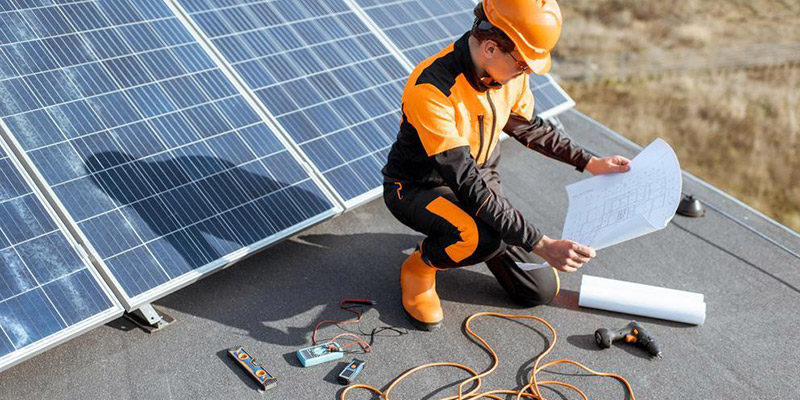
Managing Liability in the Growing Solar Industry: A Guide for Electricians
The solar industry is experiencing rapid growth. According to the Department of Energy, photovoltaic (PV) installations increased by 44% in the first half of 2023 compared to the same period the previous year—marking the fastest growth rate on record. Since 2023, the industry has continued to grow more and more.
As demand for solar roofing continues to rise, so do the opportunities for electrical contractors. But this boom also brings a new set of challenges, particularly regarding liability. Electricians working with PV systems must navigate complex installations, long-term performance risks, and legal exposure that can arise years after project completion.
Rising Demand, Rising Risk
One of the most pressing concerns in solar installations is long-term liability. Even when issues originate from faulty components, customers often hold the installer responsible for performance failures or necessary repairs. Lawsuits related to solar system failures typically name every party involved in the project—from designers and manufacturers to electricians. Understanding your contractual obligations and the potential financial risks is critical. If you are subcontracting on a larger project, verify whether you are covered by your own insurance or through policies held by the property owner or general contractor.
Hiring properly trained and certified personnel is one of the most effective ways to reduce liability. As solar adoption increases, the demand for skilled labor has surged, yet experienced professionals remain in short supply. Building a knowledgeable team that stays current with industry standards is key to avoiding costly errors.
Common Types of Solar Roofing Claims
As solar energy systems become more widespread, legal claims and consumer complaints have escalated. According to Time magazine, reports to the Federal Trade Commission about solar panel issues surged by 746% between 2018 and 2023.
For example, a recent lawsuit in Florida alleged that two solar companies routinely installed non-functional systems and failed to honor warranties tied to roof damage. All parties named in the lawsuit, including subcontractors, were forced to engage legal counsel and participate in investigations.
Frequent complaints include:
- Roof damage and water infiltration
- System underperformance
- Electrical fires
- Code violations
Common installation-related electrical issues include:
- Inadequate grounding of PV components
- Improperly secured modules
- Overloaded conductors or busbars
- Use of non-DC-rated equipment in DC circuits
- Incorrect or unsafe splicing techniques
Design flaws can also contribute to long-term problems, such as structural framing incompatible with PV panel loads, sagging roofs, or hot spots caused by poor ventilation or substandard mounting.
In many jurisdictions, local building codes have not yet caught up with the complexities of solar installations. When something goes wrong, property owners often file claims against all involved parties—leaving it up to the courts or insurers to determine responsibility.
A Few Questions to Ask Before Taking on a Solar Project
Before committing to solar installation, consider the following:
- Is your business insured for solar-related claims?
- Do you and your employees have the necessary training and certifications?
- Is your business up to date on local and national electrical codes?
- Does your team have proper experience with design, installation and interconnection?
- Can your business accurately size the system based on energy needs and available space?
- Is the structure capable of supporting the solar array?
- Have you reviewed the project design for potential flaws or risks outside your control?
More questions may pop up along the way, so it is important to ensure you can handle the unexpected!
Manage Your Risk: Best Practices
To protect your business, implement a comprehensive risk management strategy:
- Hire only qualified structural engineers, architects, and designers.
- Use experienced solar technicians familiar with evolving codes and standards.
- Understand structural requirements and include any modifications needed in your contracts.
- Design for environmental factors like wind, snow, and heat loads.
- Consult code experts to ensure compliance with both electrical and building regulations.
- Work with engineers who can assess whether the existing structure can support a solar system.
- Review all contract and warranty terms carefully, understanding your exposure.
- Maintain insurance coverage that includes long-tail liability for post-installation claims.
Also, consider partnering with a certified fire investigator who can determine the true cause of incidents. In many cases, what appears to be a system-related fire may stem from poor maintenance or unrelated property issues—such as corroded cables, loose wiring, or neglected repairs.
As part of your risk management strategy, consider partnering with a fire investigator who is qualified to assess incidents involving solar energy. In some cases, while it may initially seem that the PV system caused the fire, other contributing factors may be uncovered upon further investigation.
For instance, if a property owner neglects to maintain their solar PV system, it could lead to issues like corroded cables, loose connections, and damaged wires, among other signs of wear and tear. Properly identifying these maintenance-related problems could help exonerate you or your installer from liability.
The solar market presents immense opportunities for electricians, but also substantial risks. With rapid technological changes and increasing consumer scrutiny, it is critical to stay ahead through training, planning, and protection.
Establish a robust risk management program and consult with your insurance professional at Clyde Paul who understands the unique challenges of solar projects. Commercial general liability and professional liability insurance can help shield your business from costly legal disputes—letting you focus on growing safely in this fast-moving industry.
